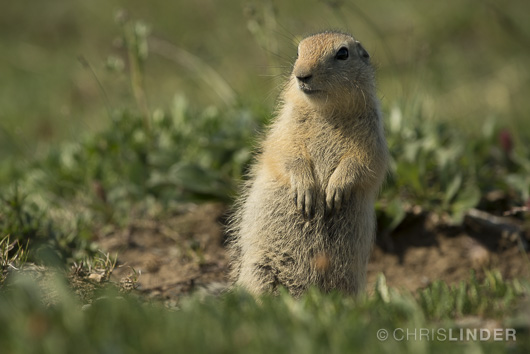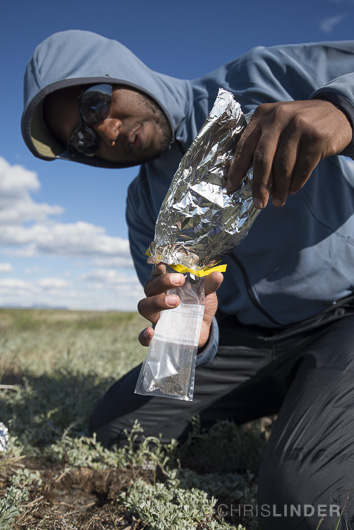The scientists who study global carbon cycling and the processes affecting it are commonly bio-geochemists. There is a lengthy chain-link of scientists lined up trying to paint this picture. I thank them for this! However, it’s difficult to fully understand a concept, when you only focus on a portion of it. You can’t paint a landscape with a truck obstructing your view. Our understanding of the effects wildlife have on global carbon cycling is rudimentary at best. There just aren’t enough scientists focusing on this piece of the puzzle. The lack of knowledge in this area is what has inspired me to politely ask the truck driver to park elsewhere.

Arctic ground squirrel
The most common animal I’ve observed after arriving in the tundra of Siberia is the arctic ground squirrel. Imagine, a larger chipmunk, with equally larger paws and feet that kind of look like an old man’s hands. Similar to a chipmunk, they make their homes in the ground – which we call burrows. They have covered this Arctic desert with their burrows – both occupied and abandoned. And these aren’t just your average small holes; some of these burrows can become huge mounds! In the process of digging these burrows, they expose deeper carbon pools to aerobic conditions – which means the ground squirrels are making previously inaccessible carbon, now accessible. The ground squirrels are also adding nutrients to the soil from their urine and scat in addition to aerating the soil. This helps microbes to breakdown the carbon and respire CO2.

Nigel collects a soil sample from near the burrows.
I want to understand how arctic ground squirrels are influencing carbon flux in the tundra. These little critters are one of many examples of wildlife that can affect the processes that affect climate change. Hopefully, other scientists are inspired to do the same.



